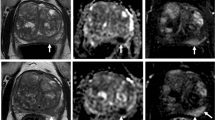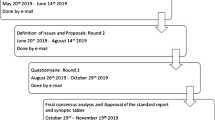Abstract
Background
The number of patients diagnosed with malignant melanoma (MM) has increased over several years. Despite early diagnosis of MM and therefore better prognosis, the number of FDG-PET/CT scans (PET/CT) seems to be increasing. This study aimed to describe all MM patients who were PET/CT scanned in 2012 at a department of plastic surgery and to analyze the pattern of referral and outcome of PET/CT scans of these patients all back from early diagnosis of the patient in the period 2008–2012.
Methods
All patients with MM stages 1–4 (AJCC stages) and melanoma of unknown primary (MUP) who were PET/CT scanned in 2012 were included. This resulted in a study group of 58 patients with 109 PET/CT scans during the study period 2008–2012.
Results
Indications for referring stages 1 and 2 patients to PET/CT were usually based on subjective symptoms of disease, whilst patients in stages 3 and 4 were usually appointed to a PET/CT based on objective, radiological or histological signs of relapse. Approximately, two thirds of the PET/CT scans of stages 1 and 2 patients, respectively, were negative, which is twice as many compared to stages 3–4. Five patients were upgraded in stage because of a biopsy taken after PET/CT. The number of additional examinations triggered per PET/CT increased with the stages.
Conclusions
Some PET/CT scans of stages 1 and 2, MM patients might have been unnecessary considering the vague indications for referral and the relatively large number of negative scans. Earlier, there was no national guideline for the use of PET/CT scans of MM patients. Hopefully, the recently published guideline from The Danish Health Board will help optimize the cost-benefit of each PET/CT scan.
Level of Evidence: Level IV, diagnostic study.

Similar content being viewed by others
References
Erdmann F, Lortet-Tieulent J, Schüz J, et al. (2013) International trends in the incidence of malignant melanoma 1953–2008—are recent generations at higher or lower risk? Int J Cancer 132(2):385–400
The Danish Cancer Registry. 2013 report. Available from www.ssi.dk. Accessed 1 Dec 2015.
Cho E, Rosner BA, Feskanich D, Colditz GA (2005) Risk factors and individual probabilities of melanoma for whites. J Clin Oncol 23(12):2669–2675
Sundhedsstyrelsen (2012) Pakkeforløb for modermærkekræft. Available from www.sst.dk. Accessed 1 Dec 2015.
Balch CM, Gershenwald JE, Soong SJ, et al. (2009) Final version of 2009 AJCC melanoma staging and classification. J Clin Oncol 27(36):6199–6206
Mohr P, Eggermont AM, Hauschild A, Buzaid A (2009) Staging of cutaneous melanoma. Ann Oncol 20(Suppl 6):vi14–vi21
Ho Shon IA, Chung DK, Saw RP, Thompson JF (2008) Imaging in cutaneous melanoma. Nucl Med Commun 29(10):847–876
Gao G, Gong B, Shen W (2013) Meta-analysis of the additional value of integrated 18FDG PET-CT for tumor distant metastasis staging: comparison with 18FDG PET alone and CT alone. Surg Oncol 22(3):195–200
Bourgeois AC, Chang TT, Fish LM, Bradley YC (2013) Positron emission tomography/computed tomography in melanoma. Radiol Clin N Am 51(5):865–879
Danielsen M, Højgaard L, Kjær A, Fischer BM (2013) Positron emission tomography in the follow-up of cutaneous malignant melanoma patients: a systematic review. Am J Nucl Med Mol Imaging 4(1):17–28
Krug B, Crott R, Lonneux M, Baurain JF, Pirson AS, Vander Borght T (2008) Role of PET in the initial staging of cutaneous malignant melanoma: systematic review. Radiology 249(3):836–844
Dummer R, Hauschild A, Guggenheim M, Keilholz U, Pentheroudakis G (2012) Cutaneous melanoma: ESMO clinical practice guidelines for diagnosis, treatment and follow-up. Ann Oncol 23(Suppl 7):vii86–vii91
Francken AB, Bastiaannet E, Hoekstra HJ (2005) Follow-up in patients with localized primary cutaneous melanoma. Lancet Oncol 6:608–621
Francken AB, Shaw HM, Accortt NA, Soong SJ, Hoekstra HJ, Thompson JF (2007) Detection of first relapse in cutaneous melanoma patients: implications for the formulation of evidence-based follow-up guidelines. Ann Surg Oncol 14:1924–1933
Francken AB, Accortt NA, Shaw HM, et al. (2008) Follow-up schedules after treatment for malignant melanoma. Br J Surg 95:1401–1407
Garbe C, Paul A, Kohler-Spath H, et al. (2003) Prospective evaluation of a follow-up schedule in cutaneous melanoma patients: recommendations for an effective follow-up strategy. J Clin Oncol 21:520–529
Meyers MO, Yeh JJ, Frank J, et al. (2009) Method of detection of initial recurrence of stage II/III cutaneous melanoma: analysis of utility of follow-up staging. Ann Surg Oncol 16:941–947
Fields RC, Coit DG (2011) Evidence-based follow-up for the patient with melanoma. Surg Oncol Clin N Am 20:181–200
NCCN Clinical practice guidelines in oncology. Melanoma v.2. 2014.
Romano E, Scordo M, Dusza SW, Coit DG, Chapman PB (2010) Site and timing of first relapse in stage III melanoma patients: implications for follow-up guidelines. J Clin Oncol 28:3042–3047
Xing Y, Cromwell KD, Cormier JN (2012) Review of diagnostic imaging modalities for the surveillance of melanoma patients. Dermatol Res Pract 2012:941921
Leiter U, Meier F, Schittek B, Garbe C (2004) The natural course of cutaneous melanoma. J Surg Oncol 86:172–178
Meier F, Will S, Ellwanger U, Schlagenhauff B, Schittek B, et al. (2002) Metastatic pathways and time courses in the orderly progression of cutaneous melanoma. Br J Dermatol 147:62–70
Time course and pattern of metastasis of cutaneous melanoma differ between men and women Liljana Mervic Published: March 6, 2012 doi: 10.1371/journal.pone.0032955
Xing Y, Bronstein Y, Ross MI, et al. (2011) Contemporary diagnostic imaging modalities for the staging and surveillance of melanoma patients: a meta-analysis. J Natl Cancer Inst 103(2):129–142
Pflugfelder A, Kochs C, Blum A, et al. (2013) Malignant melanoma S3-guidline “diagnosis, therapy and follow-up of melanoma”. J Dtsch Dermatol Ges 11(Suppl 6):1–126
Peric B, Zagar I, Novakovic S, Zgajnar J, Hocevar M (2011) Role of serum S100B and PET-CT in follow-up of patients with cutaneous melanoma. BMC Cancer 11:328
Ortiz B, Vázquez C, Martínez C, et al. (2003) S100 protein as tumoral marker in melanoma patients. Comparative study with sentinel node biopsy and whole body FDG-PET. Rev Esp Med Nucl 22(2):87–96
Jury CS, McAllister EJ, MacKie RM (2000) Rising levels of serum S100 protein precede other evidence of disease progression in patients with malignant melanoma. Br J Dermatol 143(2):269–274
Reinhardt MJ, Kensy J, Frohmann JP, et al. (2002) Value of tumour marker S-100B in melanoma patients: a comparison to 18F-FDG PET and clinical data. Nuklearmedizin 41(3):143–147
Petersen H et al (2015) FDG PET/CT in cancer: comparison of actual use with literature-based recommendations. Eur J Nucl Med Mol Imaging. 2015 Oct 30.
UK Cancer Statistics. Available from http://www.cancerresearchuk.org/health-professional/cancer-statistics/statistics-by-cancer-type/skin-cancer/incidence#ref-11. Accessed 1 Apr 2016.
National Cancer Intelligence Network. . Available from http://www.ncin.org.uk/publications/survival_by_stage Accessed 1 Apr 2016.
Sundhedsstyrelsen (2015) Opfølgningsprogram for Modermærkekræft (Melanom). Available from www.sst.dk. Accessed 1 Dec 2015.
Author information
Authors and Affiliations
Corresponding author
Ethics declarations
Conflict of interest
Mai Eldon, Ulrik Knap Kjerkegaard, Mette Heisz Ørndrup, Pia Sjøgren2, and Lars Bjørn Stolle declare that they have no conflict of interest.
Ethical standards
For this type of study formal consent is not required.
Patient consent
For this type of study informed consent is not required.
Funding
None.
Rights and permissions
About this article
Cite this article
Eldon, M., Kjerkegaard, U.K., Ørndrup, M.H. et al. Role of FDG-PET/CT in stage 1–4 malignant melanoma patients. Eur J Plast Surg 40, 47–52 (2017). https://doi.org/10.1007/s00238-016-1228-0
Received:
Accepted:
Published:
Issue Date:
DOI: https://doi.org/10.1007/s00238-016-1228-0




